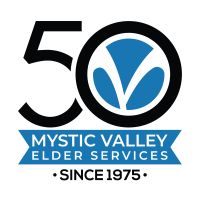
Imagine piles of papers and magazines stacked up to the ceiling. Empty food containers piled high on kitchen counters. A garage so full of belongings that a car cannot be parked inside. These are just some of the many challenges caused by a hoarding disorder, which affects millions of Americans a year but is especially prevalent in older adults.
“Hoarding goes so far beyond just having clutter in the home or being a collector of sentimental items,” says Lauren McDonald, LSW, clinical case worker for Mystic Valley Elder Services (MVES). “It can create major safety concerns such as a lack of access to exits in case of an emergency, fall hazards, hygiene issues, and eviction by landlords or housing authorities.”
In her role as a clinical case worker, McDonald supports MVES Home Care Program consumers and families as they navigate the complex problems caused by hoarding. She points out that every case is unique. Importantly, she and her team approach each situation with compassion and an emphasis on keeping the elder safe and, if possible, able to remain in his or her own home.
“Hoarding is a disorder that may be present on its own or in conjunction with other disorders such as obsessive compulsive disorder (OCD), attention deficit/hyperactivity disorder (ADHD) or depression,” explains McDonald. “Because there is a stigma associated with mental health conditions, many people are ashamed to seek help or embarrassed by their condition. Some may have experienced trauma or might be estranged from family members because of their hoarding disorder.”
To support consumers with hoarding disorders, MVES moves from an initial referral to a phone consultation to a brief in-home visit adhering to CDC guidelines during the pandemic. A comprehensive assessment is made including looking at the person’s situation and determining if he or she is still acquiring items. Oftentimes, goals are set – for example, a consumer might aim to clear his or her home so that he or she can entertain guests at the holidays or babysit grandchildren. Resources such as therapists or professionals to help clear hoarded items might be deployed.
McDonald also utilizes a HOMES risk analysis in working with consumers. H is for Health – does the hoarding pose a health risk? O is for Obstacle – are there obstacles in the home that could prevent EMTs from accessing the consumer? Are there fall risks or could there be an avalanche of belongings? M is for mental health – does the individual understand the seriousness of the situation? Does he or she need a therapist? Are they struggling with forgetfulness or dementia? E is for endangerment – is there an imminent threat? Lastly S is for structure and safety – is the home itself safe?
“Our primary goal is to support the elder,” stresses McDonald. “We keep the consumer at the center of all that we do and each and every plan we implement. MVES has also forged strong working relationships with local senior housing authorities and boards of health, some of the agencies that may enforce rules surrounding cleanliness and health.”
While hoarding can be a difficult disorder to treat and relapses are common, McDonald speaks to the many success stories she has seen working in the field of hoarding. “Recently, we were working with a consumer in the community of Winthrop,” she says. “I was able to form a relationship with her and build trust. Working together to carry out a plan, she was able to work with a professional aide to clear space in her home and make it more livable. We approached a huge task in a manageable way to make it less overwhelming.”
The service is available to consumers of MVES’ Home Care Program. To learn more about our Home Care Program, please visit us here or call us at 781-324-7705.
